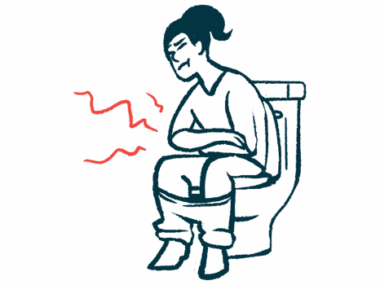Rare Case Reported of Woman, 30, With Both Lupus and HCP
Written by |

The first case in China of a patient with the autoimmune disorder systemic lupus erythematosus (SLE) who also was diagnosed with hereditary coproporphyria (HCP) was described in a recent report.
The patient was identified as a 30-year-old woman, treated at Peking Union Medical College Hospital, in Beijing, who was found to have two different genetic mutations.
According to researchers, a better understanding of both lupus and HCP could help predict and prevent porphyria attacks in challenging cases like this.
The case report, “Systemic lupus erythematosus and hereditary coproporphyria: two different entities diagnosed by WES in the same patient,” was published in the journal BioMed Research International.
SLE, the most common type of lupus, is an autoimmune disorder in which the immune system attacks its own tissues, causing widespread organ damage. More than 30 genes have been associated with SLE, including SLC7A7.
Porphyrias are a group of genetic disorders caused by disruptions in the production of heme — a molecule that transports oxygen around the body. HCP is a rare type of porphyria caused by a genetic mutation in the coproporphyrinogen III oxidase (CPOX) gene. Patients with HCP display severe symptoms that affect the abdomen and skin, and the nervous and circulatory system.
The team noted that their patient had previously had her spleen removed due to frequent bleeds.
Before being admitted to the hospital, the woman had a sore throat and cough that were treated with antibiotics and a mucolytic — an agent that helps break down mucus. Two days later, she developed severe abdominal pain and cramping, with low back pain, vomiting and painful urination, and was taken to the emergency department.
On admission, physicians noted mouth dryness with several ulcers on her lower lip. She had tenderness around her belly button, and blood tests showed low sodium levels with increased levels of inflammatory proteins. All other tests for liver, cardiovascular, thyroid, kidney, and complement function were normal.
However, the patient’s antinuclear antibodies (ANAs) were raised, signaling the presence of an autoimmune disorder. She also tested positive for SSA 60 and RO 52 antibodies.
Physicians treated her for lupus, back pain, and a kidney infection. But her urinary symptoms worsened 24 hours following admission, with her urine developing a reddish color that turned dark brown after exposure to sunlight.
Further urine tests for porphyria showed that her urobilinogen and free erythrocyte protoporphyrin (FEP) levels were abnormally elevated. Her uroporphyrinogen (UPG) and porphobilinogen (PBG) tests also came back positive. She was diagnosed with acute porphyria and began appropriate treatment.
At her follow-up appointment four months later, the woman’s abdominal symptoms had resolved.
Researchers performed genetic tests on the patient and her father in an attempt to determine the causes of both diseases. They found a mutation in the woman’s CPOX gene, which her father did not have. Mutations also were found in the SLC7A7 gene, which is associated with SLE.
“The keys to the diagnosis of porphyria were reddish dark urine, positive UPG and PBG, and increased FEP,” the researchers wrote, noting that the woman developed symptoms that included abdominal pain, vomiting, painful urination, fast heartbeat, high blood pressure, and low sodium levels.
“The symptoms … could all be explained by an attack of AHP,” they wrote, adding, “The simultaneous mutation of CPOX and SLC7A7 may explain the … connections of HCP and SLE.”






